Last Updated on July 8, 2025 by Owen McGab Enaohwo
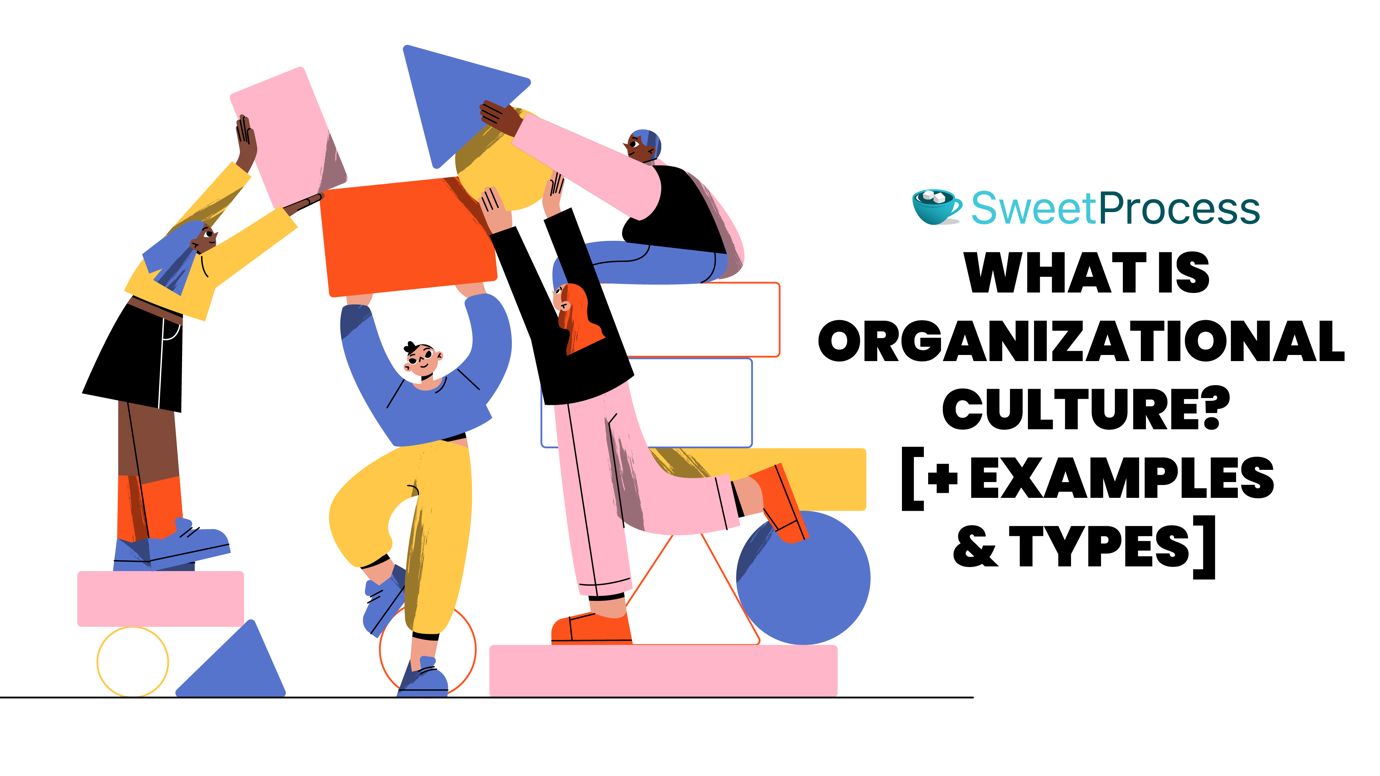
What’s the cost of a bad organizational culture?
It is more than just unhappy employees. It’s the top-performing manager who quits without warning. It’s the new hire who leaves in six months. It’s the endless cycle of recruiting, training, and replacing people who should have been your company’s biggest assets.
In today’s cutthroat business landscape, where 51% of employees are actively looking for their next role, culture isn’t just nice to have—it’s survival. It’s the make-or-break difference between a thriving company and one slowly dying from the inside. And yet, building a strong organizational culture often feels like trying to solve a puzzle without the picture on the box.
So, how do you do it? How do you create a desired culture that not only retains your best people but also helps them thrive? This guide breaks it all down, offering actionable steps, proven strategies, and real-world examples of businesses that have transformed their positive organizational culture.
With SweetProcess, you can build an healthy culture where people stay, grow, and succeed, all by simplifying the processes that make your organization tick. Let’s show you how.
What You’ll Learn In This Guide
What Is Organizational Culture?
Why Is Organizational Culture Important?
How to Build a Successful Organizational Culture
How to Cultivate a Strong Organizational Culture With SweetProcess
Types of Organizational Culture
10 Organizational Culture Examples to Inspire Your Team
Improve Your Organizational Culture With SweetProcess
What Is Organizational Culture?
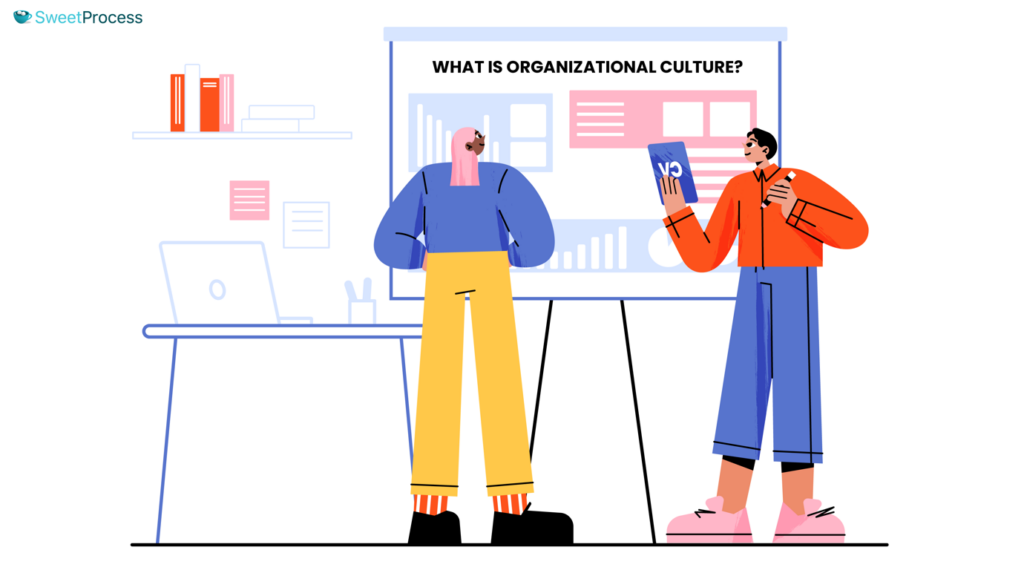
Think of it as your company’s DNA. Just as people have unique traits that make them who they are, organizations have their own character that influences everything. Some cultures are innovative and risk-taking, while others are more structured and conservative. A strong organizational culture aligns employees around common goals and creates a sense of purpose. On the flip side, a weak or toxic ideological culture leads to disengagement, conflict, and high turnover rates.
For many businesses, corporate culture is often unspoken. It’s in the little things: how leaders treat employees, how teams celebrate wins, or even how setbacks are handled. Whether carefully built or left to chance, organizational culture exists, and it can make or break your company’s success.
Why Is Organizational Culture Important?

A strong organizational culture isn’t just a feel-good aspect of a business—it’s a competitive advantage. From how employees engage with their work to how customers perceive your brand, positive culture touches every corner of your organization. Here’s why it matters:
Impact on Employee Engagement
Employee engagement isn’t about ping-pong tables or free snacks. It’s about creating an environment where team members feel valued, understood, and connected to something bigger than their daily tasks.
Engaged employees don’t just work—they contribute, innovate, and drive success. Gallup studies show that companies with high employee engagement are 23% more profitable. When employees feel connected to a company’s mission and values, they’re more likely to go above and beyond, bringing their full creativity and passion to work.
Influences Employee Performance and Productivity
Culture directly drives performance. In a positive, well-defined organizational culture, employees know exactly what’s expected, feel empowered to make decisions, and are motivated to do well. It’s like having an invisible performance accelerator running through your organization.
For instance, according to Deloitte research in 2019, companies with strong, purpose-driven cultures see 40% higher levels of workforce commitment and 35% more innovation among employees. In 2024, the percentages are even higher, with companies significantly reducing internal friction and miscommunication due to great organizational culture.
Role in Employee Retention
People don’t leave jobs—they leave bad organizational culture. In an era where competitors constantly court top talent, culture is your strongest retention strategy. High turnover often points to a deeper issue with workplace culture. A robust organizational culture acts as a powerful retention magnet. When employees feel they belong, they’re much less likely to jump ship.
Effect on Company Reputation
Your organizational culture doesn’t just stay within the office walls—it speaks to potential hires, partners, and customers. A strong culture builds your brand reputation, attracting top talent and business opportunities. Conversely, a poor culture can tarnish your company’s image.
Glassdoor reports that 86% of job seekers research company reviews and ratings before applying, making organizational culture a critical recruitment and brand-building tool.
Leads to Customer Satisfaction
Happy employees lead to happy customers. In 2018, PostBeyond, together with Golfdale Consulting, surveyed over 2,500 employees and realized that companies with engaged employees outperform those without by up to 202% in customer ratings. When your team feels supported and understood, they deliver better customer experiences. A strong culture creates employees who are passionate about serving clients, turning customers into loyal advocates.
Helps With Building the Right Team
The right culture attracts the right people. When you clearly define your values and expectations, you naturally draw candidates who align with your vision. This reduces mismatches and helps build teams that are not just competent but truly committed.
Is your organizational structure driving success or causing challenges? With SweetProcess, you can create clear processes that align your team, boost productivity, and build a culture worth celebrating. Start here.
How to Build a Successful Organizational Culture
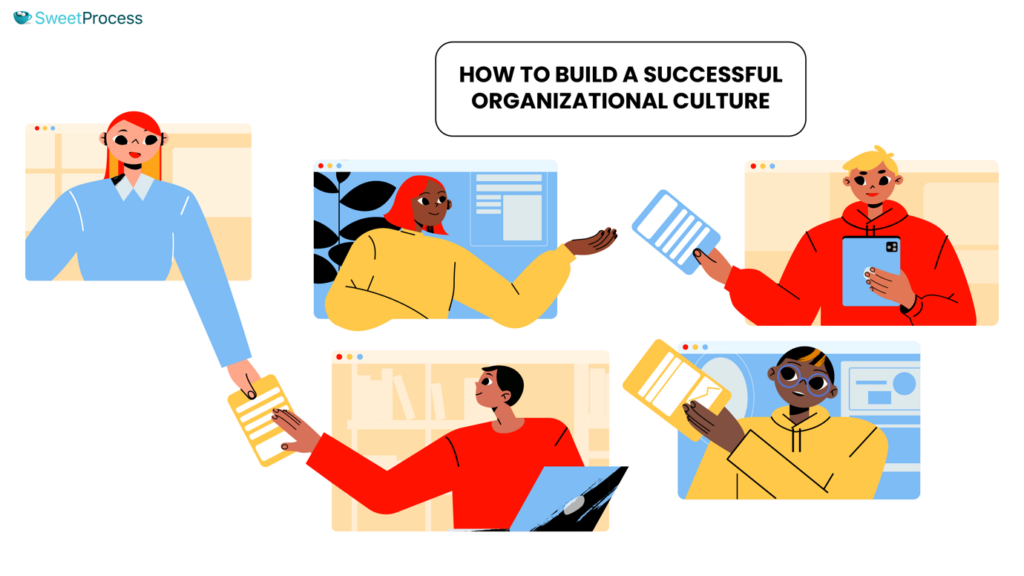
A thriving organizational culture doesn’t happen by chance—it’s built deliberately, step by step. Here are proven strategies to get started:
Cultivate a Culture of Recognition
Recognition is the fuel that powers employee motivation. Employees want to know their efforts matter. Build a culture where recognition is woven into the daily fabric of work, whether through a quick “thank you,” team shoutouts, or formal rewards programs. Below is an example of how the CEO of Nationwide United Auto Transport describes one of their most impactful company culture efforts.
“Our most impactful strategy at Nationwide United Auto Transport lies in fostering open communication and high-level service delivery. This culture directly contributed to our success by creating an environment where employees are not only heard but are effectively motivated to meet client needs—because a satisfied client equals a successful business. An unexpected lesson gleaned over the years is the genuine importance of team appreciation; it’s not simply a ‘nice-to-do’ but a ‘need-to-do.’ Recognizing and rewarding staff dedication consistently breeds a healthy workplace environment.”
Chris Estrada
CEO & Founder of Nationwide United Auto Transport
Amplify Employee Feedback
Feedback isn’t a top-down monologue—it’s a two-way conversation. Your employees are on the frontlines—they see what works and what doesn’t. Regularly ask for their feedback, but don’t stop there. Act on what they share, and communicate the changes you’ve made. Here’s an example of how you can foster it.
“At Bulletproof Zone, the key to building a thriving organizational culture has been to prioritize transparency and open dialogue. Encouraging team members to share their ideas and perspectives not only fosters trust but also drives innovation. Our unique culture, infused with shared values and mutual respect, has been instrumental in our phenomenal success, sparking creativity and teamwork. The unexpected yet valuable lesson: A meaningful workplace isn’t created by top-down decision-making. Instead, it’s cultivated by creating an environment where everyone feels heard, valued, and motivated to contribute to the overall vision.”
Kevin Lim
CEO, Bulletproof Zone
Successful organizations create multiple channels for employees to share their thoughts, concerns, and innovative ideas. SweetProcess makes it easy to do this. With structured systems in place, you can collect, analyze, and implement feedback seamlessly. Get started today and get a fourteen-day free trial when you sign up.
Make Your Leaders Culture Advocates
Great cultures start at the top. Leaders aren’t just managers—they’re organizational culture’s primary architects and ambassadors. Leaders who live your company’s values inspire others to do the same.
With SweetProcess, you can easily document and share training and resources to help managers and executives understand how their actions and communication shape the workplace environment. Start today; no credit card required.
Document Your Company’s Culture
Your culture should be more than an abstract idea. Write down your mission, vision, and values, and create guidelines that employees can refer to. A well-documented organization culture helps new hires integrate faster and ensures consistency across teams.
Tools like SweetProcess make this documentation seamless and actionable.Get started with creating your coma culture guide with SweetProcess.
Align Actions With Company Values
Actions speak louder than words. Whether it’s how you reward performance, handle conflicts, or celebrate milestones, make sure every decision consistently reflects the values your company stands for. This alignment builds trust, credibility, and a sense of authenticity.
“At Srlon, the biggest driver for a thriving organizational culture has been an enduring focus on innovation and customer value. We believe that by acclimating our employees to this mindset, we foster a sense of ownership, commitment, and drive for excellence—a culture that has directly contributed to our business success. One unexpected lesson I’ve learned is the immense power of mutual trust and respect to create an environment where everyone feels inspired, secure, and significant.”
Tony Chen
CEO, Srlon
You can always guarantee that actions align with values by creating consistent, standardized processes that reflect your core principles with SweetProcess. You can sign up and get started now.
Strengthen Team Collaboration
Strong cultures thrive on collaboration. Encourage open communication, create shared goals, and provide platforms where teams can work together effectively. Collaboration doesn’t just improve results—it deepens relationships and builds trust among team members.
“I’ve come to notice the exceptional interconnection between organizational culture and business success. Our most impactful strategy was fostering transparency from the get-go, where everyone is aware of how we generate revenue and work ethics. This open culture fed into employee trust and subsequently led to increased productivity. One unexpected lesson I’ve learned is the potential of small, consistent gestures in creating a meaningful workplace—recognizing individual contributions periodically can go a long way in making employees feel valued in our organization.”
Nick Drewe
Founder & CEO, Wethrift
Invest in Continuous Learning and Growth
Staying stagnant isn’t an option in today’s fast-paced world. Offer opportunities for professional development through workshops, mentorships, and access to learning resources. Employees who grow with your company feel more committed and valued. With SweetProcess, you can create training materials and learning paths that empower your team to grow continuously. Start here.
“Intentionally fostering a culture of constant innovation and respect has been a key strategy at Promax. By investing heavily in developing our staff’s skills and encouraging experimentation, we’ve seen a direct increase in our productivity and quality of pogo pin products. Our culture has led us to achieve multiple patents and conduct over 1,000 successful projects. What’s unexpected is how an environment that promotes individual growth and celebrates courageous thinking not only motivates employees but also leads to a sustainable, successful business.”
Ant Liang
CEO, Promax
Integrate Culture From Onboarding
First impressions matter. Use the onboarding process to immerse new hires in your organization culture. Introduce them to your values, explain how teams work, and provide them with tools to succeed. This sets a strong organizational culture for long-term alignment.
“An effective strategy I’ve employed in establishing a dynamic organizational culture is creating a customer-centric business model. Ensuring every team member understands the vital role of satisfying customers radiates a powerful sense of purpose throughout the organization. I’ve experienced firsthand how this culture has been pivotal in achieving business success. It has not only led to our affordable, high-quality wedding gown preservation services but also fostered a trusting relationship with our clients. The unexpected lesson here is that making customers the core of your organizational culture doesn’t just create a meaningful workplace, it brings tangible business success.”
Thomas Anderson
Founder and CEO, Trusted Wedding Gown Preservation
Tailor the Employee Experience
Every employee has unique needs. Consider offering flexible work options, personalized development plans, or wellness programs that cater to individual preferences.
Building a successful organizational culture doesn’t have to be overwhelming.
How to Cultivate a Strong Organizational Culture With SweetProcess
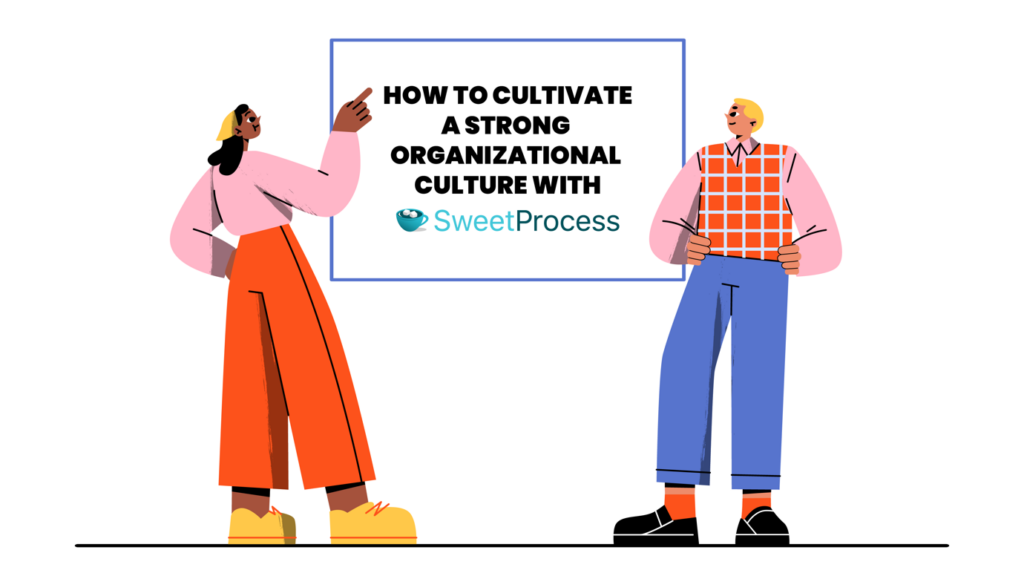
Building an extraordinary organizational culture isn’t just about good intentions—it’s about execution. SweetProcess offers a comprehensive platform with robust tools that transform culture from a concept to a lived experience. Here’s how:
Document and Manage Your Company’s Procedures and Processes
Benchmark Wealth Management faced a big problem with unclear processes. The team recognized that these inefficiencies were consuming excessive amounts of their time.
As a result, employees became frustrated, and the company’s growth was being held back. Soon, they accepted it was time for a change and turned to SweetProcess.
By using SweetProcess, they were able to organize all their workflows into an easy-to-access system. This improved productivity and helped the team work together. Employees became more confident and accountable, and the company’s culture became more focused and efficient. Today, Benchmark Wealth Management operates precisely and clearly, embodying the cultural values they’ve always strived for. Read the full story here.
With SweetProcess, you can store all your policies in one place, making them easy for employees to find and follow. Updates are seamless, so everyone stays on the same page.
Here’s how to create a procedure with SweetProcess:
Step 1: Create an account or log in and complete setup steps, including adding your team.
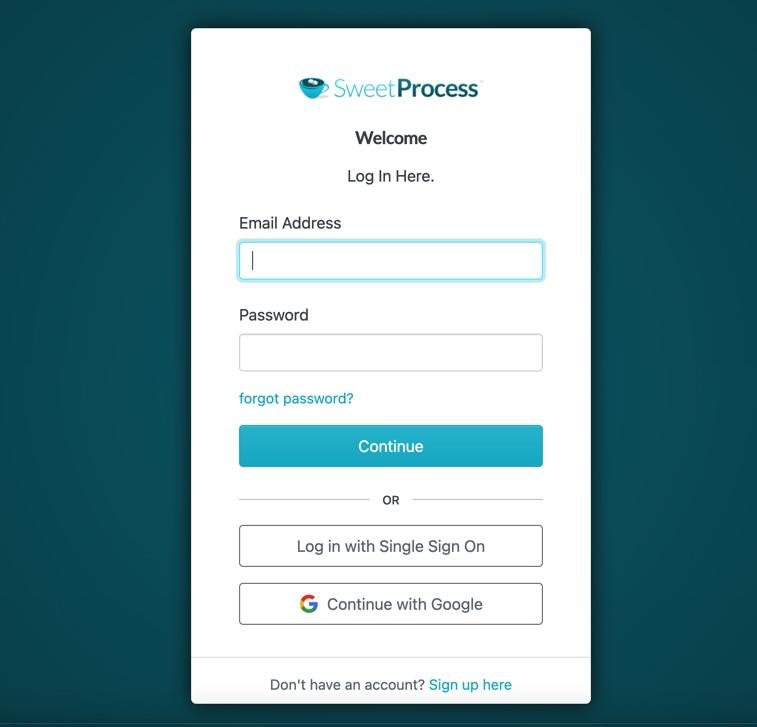
You can import your existing procedures, but if you wish to create them from scratch, you can skip these steps and continue with them later.
Step 2: Click “More” and select “Procedures.”
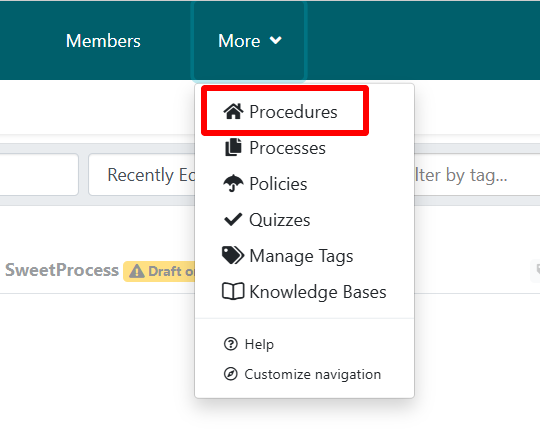
Step 3: Enter a name and assign it to a team. Click “Continue.”

Step 4: Click the procedure title and provide a description.

Step 5: Organize your procedure with relevant tags.

Step 6: Click “Add a Step,” provide a title and description, and include media if needed.

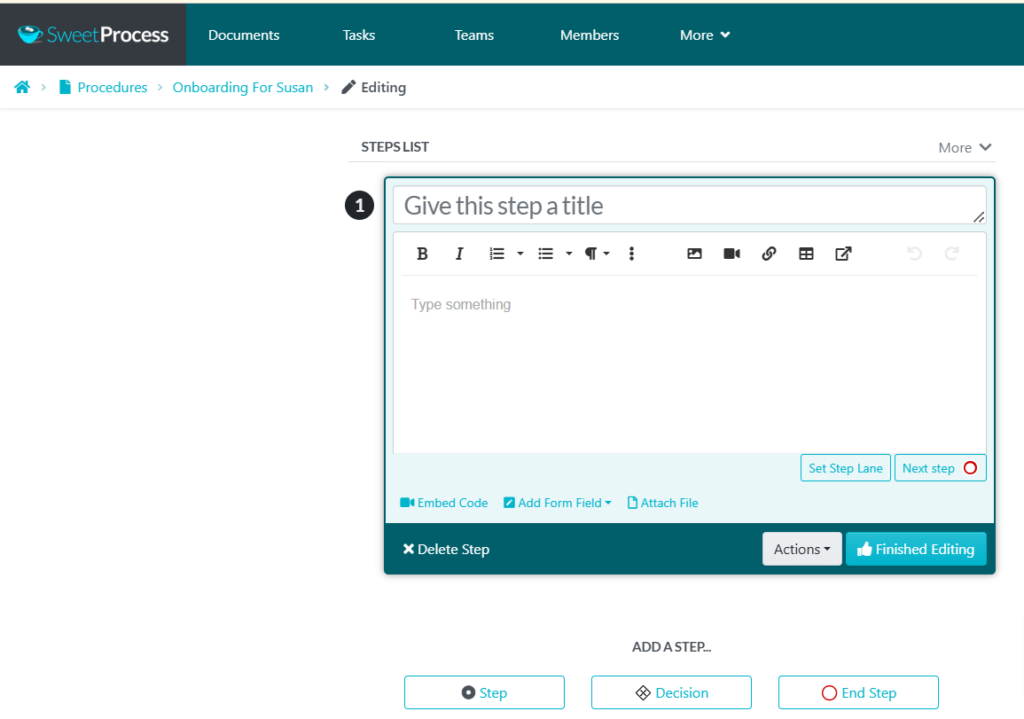
Step 7: Click “Approve” to finalize the procedure.

After all is done, click “Procedures” to return to the dashboard, where you can view and manage all your procedures.
How to Create a Process Using SweetProcess
Step 1: Navigate to the “Processes” section on your home page.
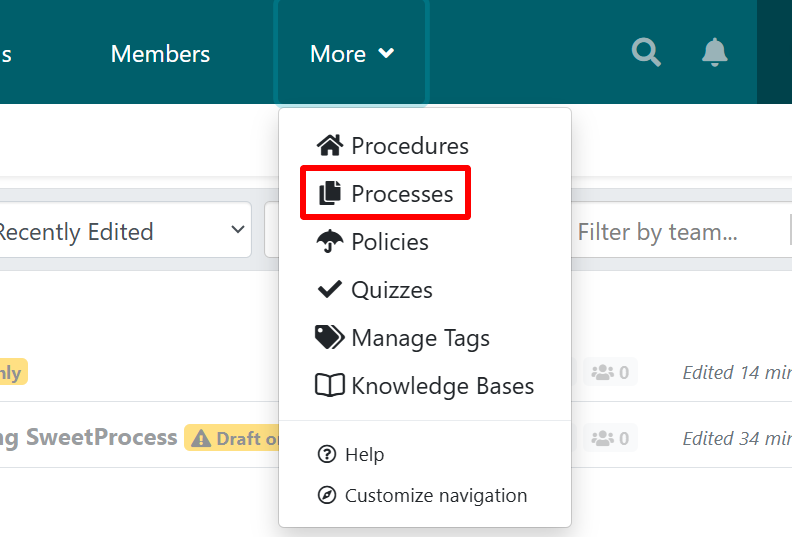

Step 2: Enter a name for the process.

Step 3: Select the teams responsible for the process and click “Continue.”
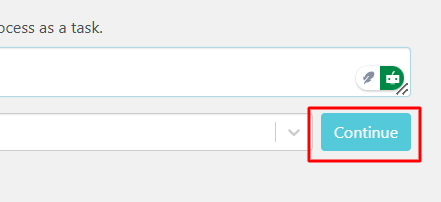
Step 4: Click the process title and provide a detailed description.

How to Import an Existing Process to SweetProcess
If you have procedures that haven’t yet been added to your organization’s SweetProcess account, you can quickly migrate them for easy access and editing by you or your team.
Note: Imported procedures are automatically tagged with “imported” to help you filter and locate them efficiently.
Step 1: To ensure SweetProcess correctly detects the title, description, and steps during the import, format your document using built-in heading styles (e.g., Heading 1, Heading 2).
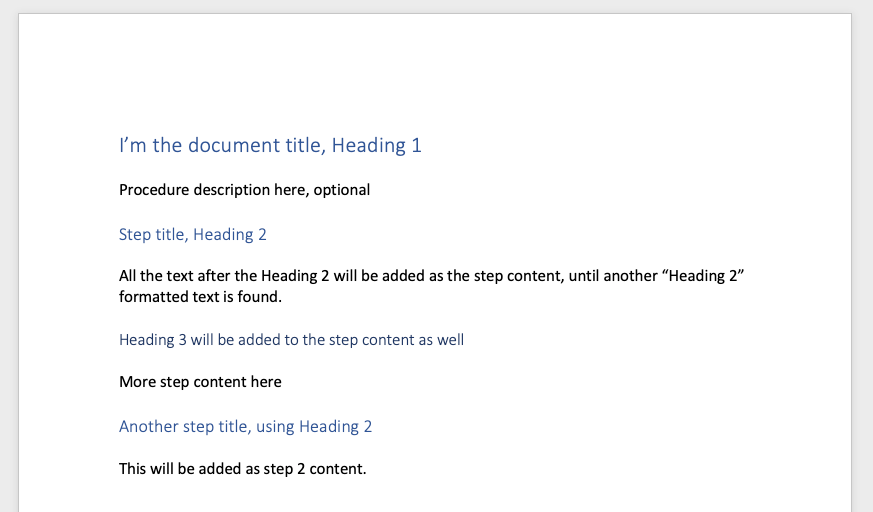
Avoid resizing or recoloring text; the system won’t recognize these as headings.
Step 2: Click the “Procedures” tab on your dashboard.

Step 3: Click the arrow next to “Create Procedure” and select “Upload Document.”
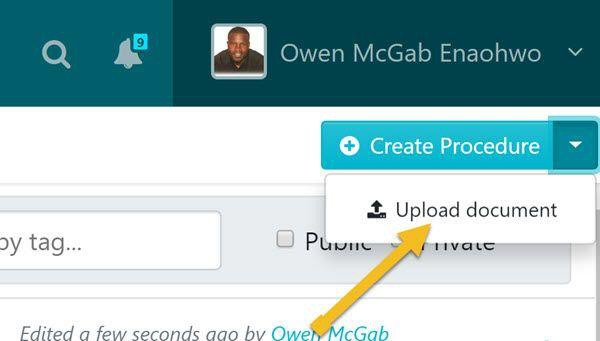
Step 4: Choose the team(s) to which the procedure will belong.
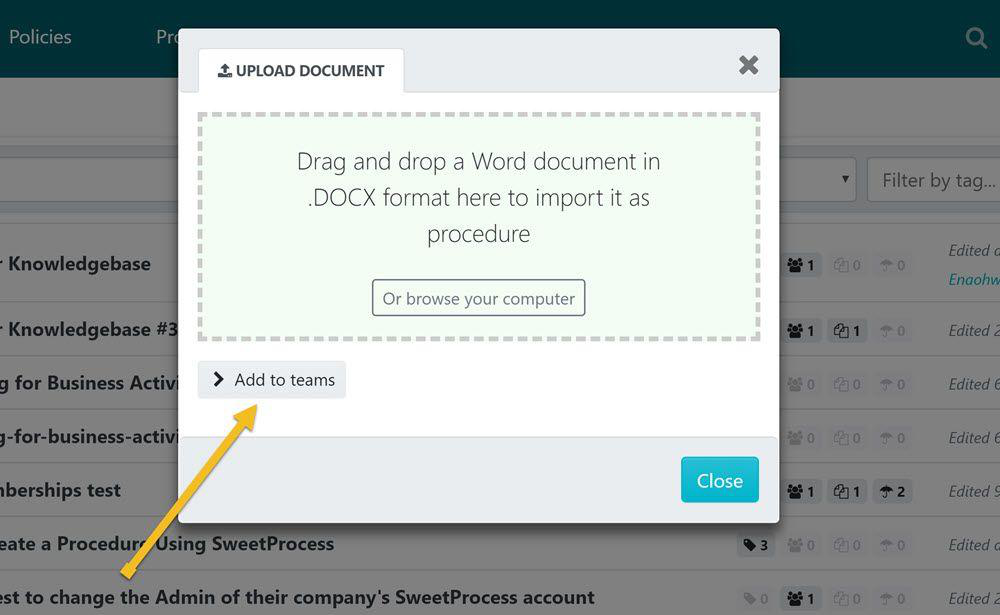
Step 5: Drag and drop the document or browse your computer to upload it.
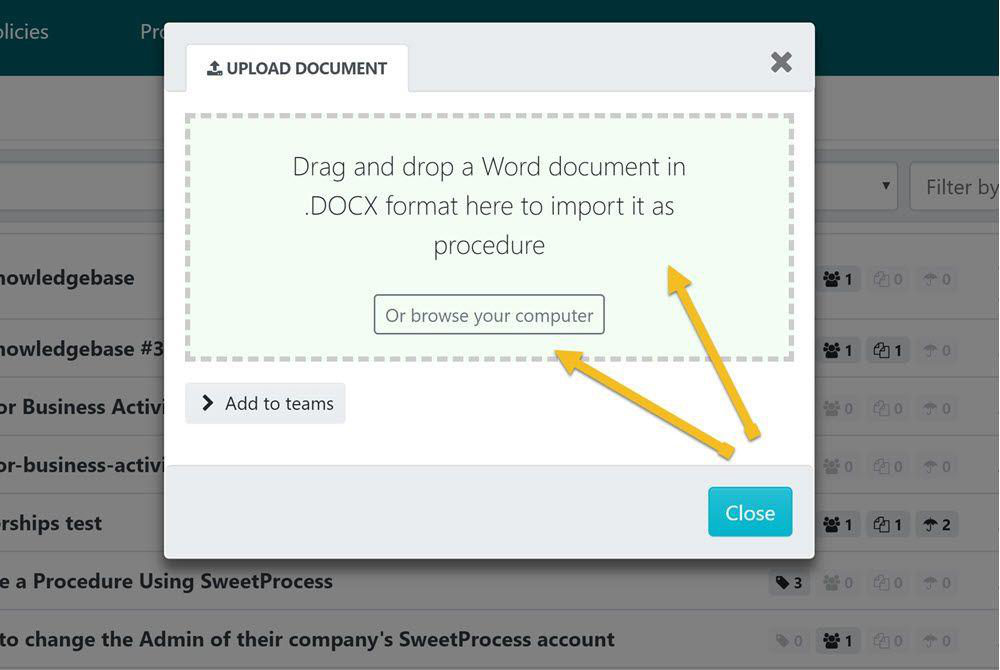
Step 6: Let the file process, then click “View procedure” to review it.

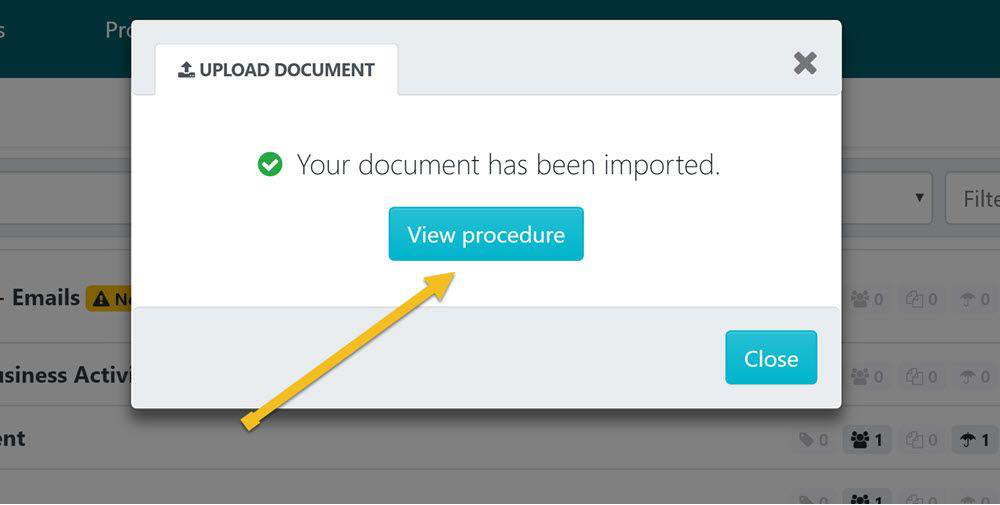
Step 7: Make necessary changes, then click “Approve” to finalize and publish the procedure.


Note: If you do not have the ability to approve the procedure, you will be able to request approval by clicking on the “Request Approval” button as shown below.

This feature is essential for organizations aiming to standardize tasks and minimize errors, especially during training.
Streamline your operations and strengthen your organizational culture with SweetProcess. Start your 14-day free trial today.
Document and Manage Your Company’s Policies
Policies guide your team’s actions and reflect your company’s values. They help create consistency and build trust within your organization. But what is the use of a policy if they are scattered across multiple platforms and hard to access?
This was one problem Liston Newton Advisory struggled with that caused confusion and delays. After switching to SweetProcess, they created a single, organized system where all policies were accessible and easily understood. This change improved efficiency, performance management, built employee trust, and reinforced a culture of accountability. Read the full story here.
Here’s How to Use SweetProcess to Manage Your Company’s Policies
Step 1: On your SweetProcess account home page, go to the “Policies” tab.
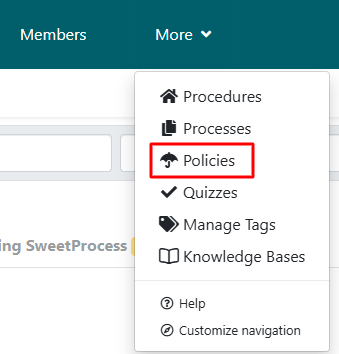
Step 2: Click “Create Policy,” add a title, assign it to a team, and click “Continue.”
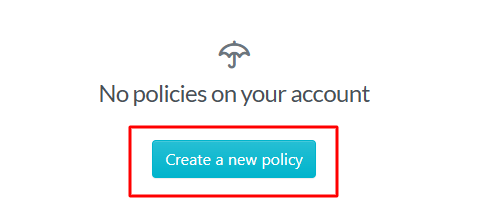

Step 3: Provide a title and description.
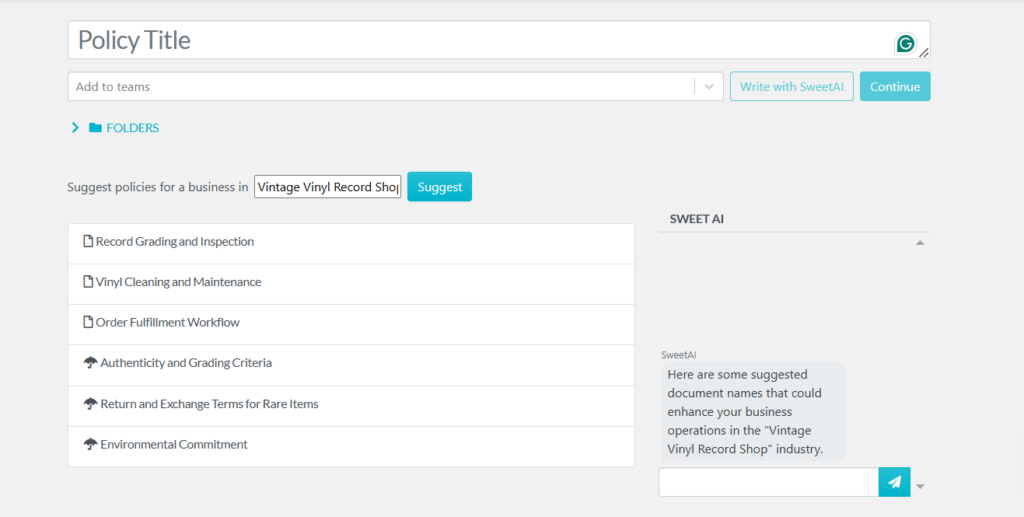
Our SweetAI feature can help you write one from scratch if you don’t have an existing policy. Simply suggest a policy title for your business, and let the AI guide you through the process.
Step 4: Review the policy and click “Approve” to make it live.

Bring clarity to your organization by documenting your policies with SweetProcess. Start your free trial now.
Build an Internal Knowledge Base for Employees
An internal knowledge base ensures employees have all the information they need at their fingertips. From answering FAQs to accessing essential documents, SweetProcess makes creating a knowledge base easy. You can organize it by topics or departments, so everyone can quickly find what they’re looking for.
How to Build a Knowledge Base with SweetProcess
Step 1: Click “More” on the dashboard and select “Knowledge Bases.”

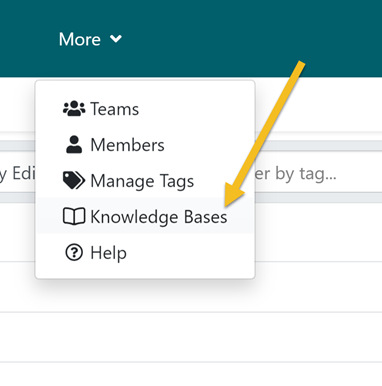
Step 2: Click “Create Knowledge Base.”

Step 3: Enter a title and click “Continue.”

pLink Leadership knew their organizational culture needed an upgrade when employees started expressing frustration about unclear processes and lack of accessible information. Team members often hesitated to take action because they couldn’t find the information they needed. After implementing SweetProcess, pLink Leadership was able to create a comprehensive internal knowledge base that turned things around for them. Employees could now access reliable information instantly, which boosted their confidence and enabled them to perform their roles effectively. Read the full story here.
Take this chance to also create a knowledge base that empowers your team with SweetProcess. Try it free today.
Set up Your Teams to Reflect Your Company Culture
The way your teams are set up affects how your organizational culture works. SweetProcess lets you create teams within the platform, making it easy to assign responsibilities and processes.
How to Set up Teams With SweetProcess
Step 1: Click “More” in the top navigation bar and select “Teams.”
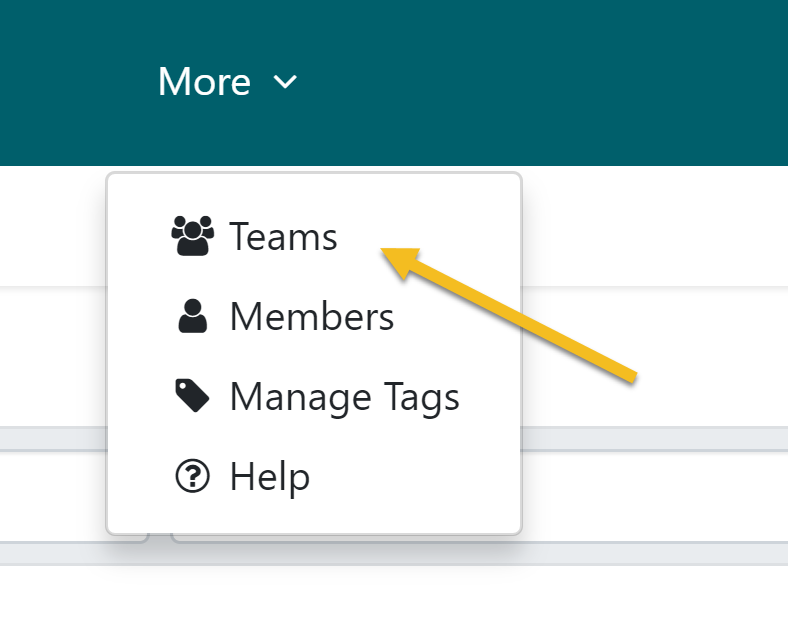
Step 2: Click “Create a Team.”

Step 3: Enter the team name and description, then click “Create.”
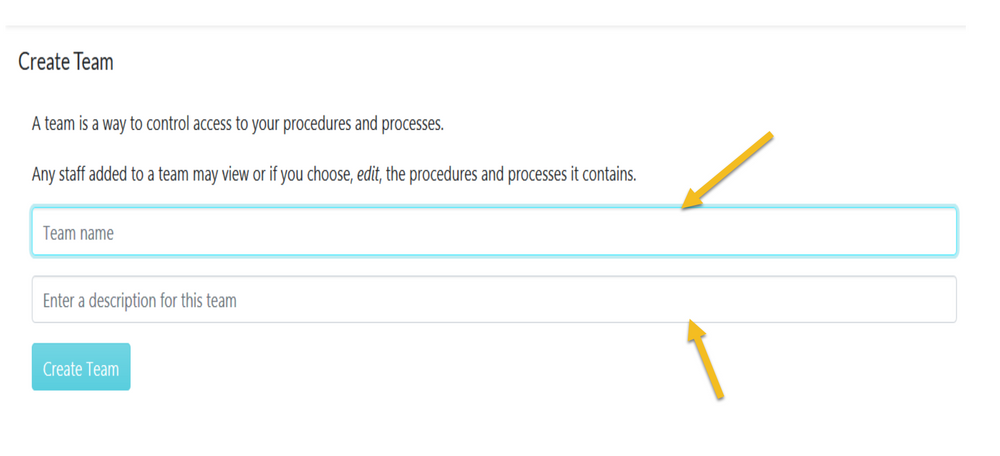
Build a Quiz to Assess Your Team’s Grasp of Company Policies, Processes, and Procedures
A strong culture relies on employees who understand your policies and processes. SweetProcess lets you create quizzes to check your team’s knowledge and identify areas where they need support.
How to Use the Quiz Feature in SweetProcess
Step 1: Go to “Quizzes” and click “Create Quiz.”
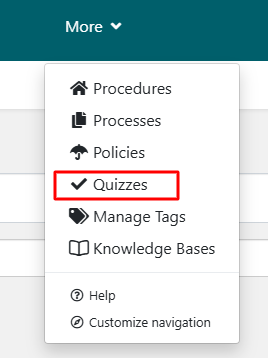

Step 2: Add quiz title.

Step 3: Click on “Add a Question” and choose either a multiple-choice answer or an open-ended answer.

Step 4: Edit and view answers exclusively as the quiz author to maintain confidentiality.
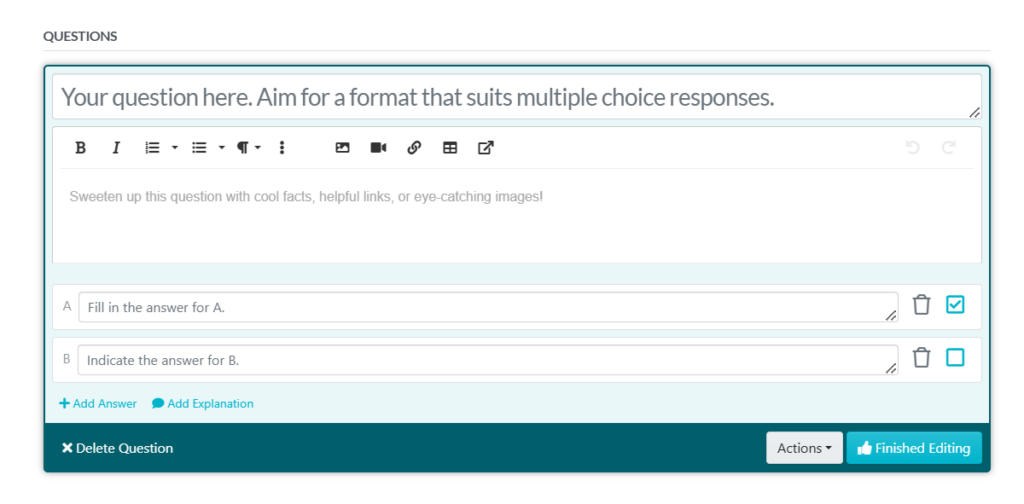
Assign the quiz to specific teams to encourage learning and collaboration. You can also track the quiz by choosing to receive notifications with results once team members complete the quiz.

Best Practices: Keep quizzes aligned with updated procedures, policies, and processes. Use quizzes in onboarding to enhance compliance and reduce errors.
Collaborate With Team Members in One Single Place
Teamwork is at the heart of strong company values. SweetProcess provides a central space for employees to work together, share ideas, and get things done efficiently, including powerful document collaboration tools that make teamwork seamless. With all communication and collaboration happening in one place, SweetProcess breaks down silos and helps your team work better together.
How to Collect Feedback From Employees on SweetProcess
Step 1: While an employee is viewing a procedure, they can click the comment bubble icon.
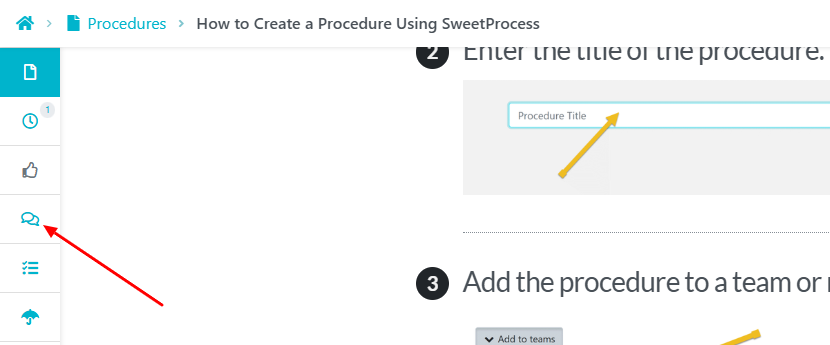
Step 2: Type comments in the field and click the paper plane icon to send.
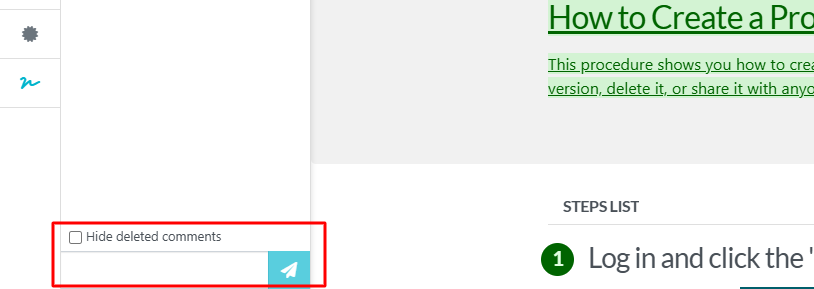
How to Assign Training Tasks to Employees on SweetProcess
Assigning tasks allows you to monitor individual or team progress easily.
Step 1: Find the procedure or process you want to assign under the “Procedures” or “Processes” tab.
Step 2: Click the three-dot icon or the “Actions” menu, then select “Assign as Task.”
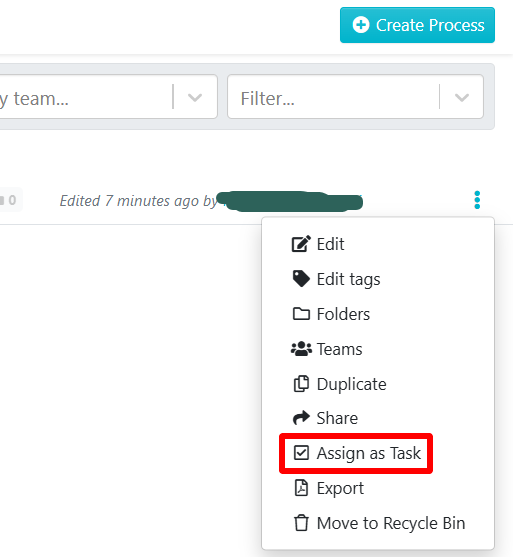
Step 3: Assign the task to one team or multiple team members.
Another way to do this is from the “Actions” menu while viewing the procedure or process in detail.
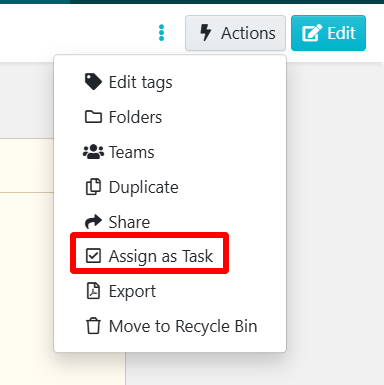
Step 4: Pick the teammates to whom you want to assign the task.

Step 5: Add specifics like start date, deadline, or recurring settings if needed.
By default, tasks are set as one-time, but you can configure them to recur (e.g., every third Friday of the month, weekly, etc.) according to your needs.
Step 6: Review and assign the task. Notifications will keep everyone updated on task progress.
Both you and your team members will receive updates on task progress, such as overdue alerts, completion notifications, and reminders for upcoming tasks.
How to Monitor the Progress of Employees’ Training Using SweetProcess
SweetProcess lets you track training progress in real time using checklists. You are able to monitor completion rates, overdue tasks, and upcoming deadlines. You can also use insights to identify areas for improvement or highlight employee strengths.
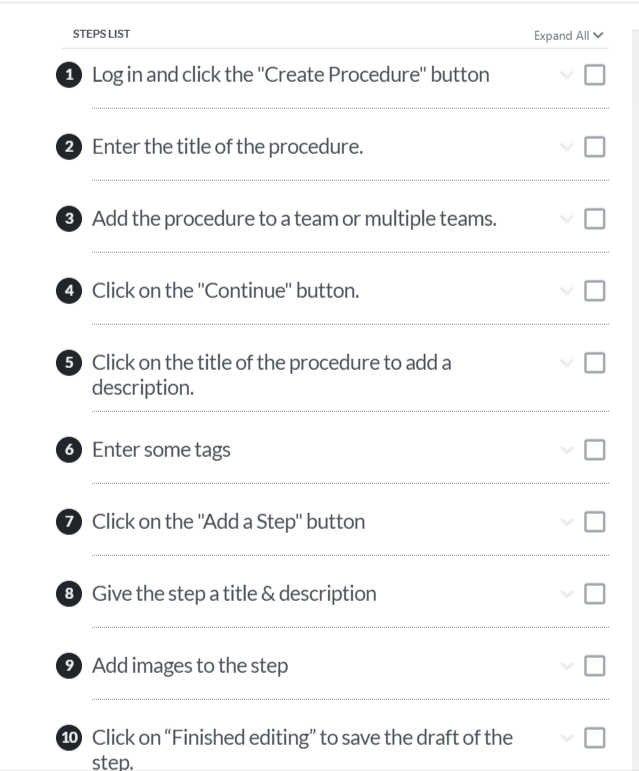
This insight can help managers identify areas for additional training or where an employee excels, enabling a proactive approach to organizational development.
Spark Marketer was struggling with inconsistent collaboration practices and employee uncertainty about processes. They turned to SweetProcess to standardize their operating procedures and create a centralized hub for team collaboration. The result? Employees felt empowered to share ideas, clarify doubts, and work more efficiently as a team. Read the full story here.
Types of Organizational Culture
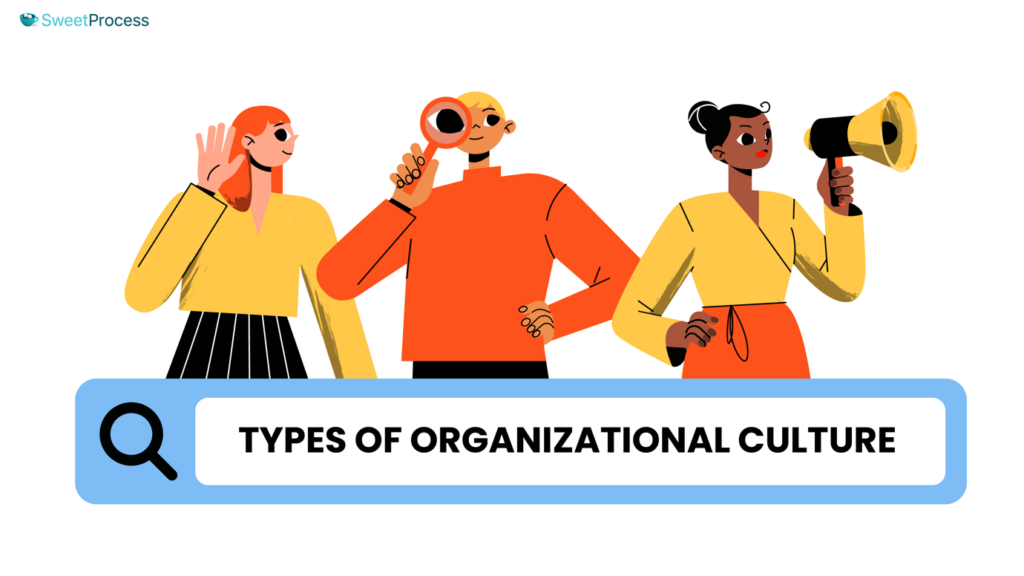
Understanding the different types of organizational culture can help you decide which one best aligns with your business goals. Here are some of the most common types and how they shape organizations:
Clan Culture (Collaborative)
Clan culture emphasizes teamwork and collaboration. Companies with this type of culture operate like close-knit families where employees feel supported and encouraged to share ideas. Leadership focuses on mentorship, and decision-making is often inclusive.
Example: Companies like Zappos thrive on clan culture by prioritizing employee happiness and building strong relationships within their teams.
Adhocracy Culture (Innovative)
Adhocracy culture values innovation and creativity. It encourages employees to take risks, think outside the box, and develop groundbreaking ideas. Companies with this culture are often leaders in their industries, embracing change and staying ahead of trends.
Example: Google embodies an adhocracy culture with its emphasis on innovation and freedom for employees to explore their creativity.
Market Culture (Results-Oriented)
Market culture is all about results and competition. Companies with this culture focus on achieving goals, driving performance, and maintaining a competitive edge. Success is measured by profits, market share, and growth.
Example: Amazon’s focus on efficiency and customer satisfaction is a prime example of market culture.
Hierarchy Culture (Structured)
Hierarchical culture values structure, stability, and control. These organizations rely on clear procedures, defined roles, and consistent operations to maintain efficiency and order.
Example: Hospitals often adopt a hierarchical culture to ensure clear roles and protocols for critical operations, promoting safety and efficiency in high-stakes environments.
Customer-First Culture
Customer-first culture prioritizes the needs and satisfaction of customers above all else. Employees in these organizations are encouraged to deliver excellent service and build strong relationships with customers.
Example: Ritz-Carlton is well-known for its customer-first approach, empowering employees to go above and beyond for guests.
Purpose Culture
Purpose culture centers on a shared mission or cause. Employees are motivated by their belief in the company’s mission and the positive impact they can make through their work.
Example: Patagonia embraces purpose culture by focusing on sustainability and environmental activism.
Strong Leadership Culture
Strong leadership culture develops leaders at every level. It prioritizes mentorship, growth, and empowerment.
Example: Apple’s leadership culture, driven by Steve Jobs’s legacy, continues to emphasize innovation, creativity, and pushing boundaries, inspiring employees to deliver groundbreaking results.
No matter your organizational culture, SweetProcess helps you implement the processes that make it thrive. Sign up to start your 14-day free trial today.
10 Organizational Culture Examples to Inspire Your Team

Sometimes, the best way to understand organizational culture is to see it in action. Here are ten companies that have built strong, inspiring cultures and what makes them stand out:
1. Zappos
Zappos, an online shoe and clothing retailer, is celebrated for its exceptional customer service and employee happiness. Known for its quirky culture, Zappos emphasizes creating fun while delivering “WOW” through service. The company’s ten core values, including “Create Fun and a Little Weirdness,” make work a lively and engaging experience.
2. Adobe
Adobe, the creative software giant, fosters a culture that values trust, creativity, and ownership. Employees are encouraged to take the reins of their projects, fueling innovation without the pressure of micromanagement. Development programs ensure employees evolve both professionally and personally, keeping Adobe at the forefront of creativity.
3. Netflix
As a streaming service pioneer, Netflix thrives on its culture of freedom and responsibility. Employees are given autonomy to make impactful decisions while adhering to the company’s high standards. This culture of trust and accountability enables Netflix to stay ahead in the competitive entertainment industry.
4. Google
Google’s mission is to “organize the world’s information and make it universally accessible and useful.” This mission fuels its innovative culture, where employees are encouraged to work on passion projects and collaborate across teams. Perks like free meals and wellness programs add to the company’s reputation as an inspiring place to work.
5. Slack
Slack, known for its workplace messaging app, prioritizes collaboration and empathy. By fostering inclusivity and providing tools that make teamwork effortless, Slack ensures its employees feel supported and valued. This approach mirrors its product philosophy, making work simpler and more enjoyable.
6. Atlassian
Atlassian, the software company behind Jira and Trello, thrives on openness, teamwork, and continuous improvement. Employees are encouraged to share knowledge freely, promoting unity and innovation. Its unique team structures reflect its agile philosophy, inspiring companies worldwide.
7. HubSpot
HubSpot, a leading CRM platform, embodies HEART: humble, empathetic, adaptable, remarkable, and transparent. This framework shapes interactions within teams and with customers, fostering a workplace where employees feel valued and inspired.
8. Airbnb
Airbnb revolutionized the hospitality industry with its culture of belonging. Employees are empowered to bring their whole selves to work, fostering creativity and innovation in building community-driven experiences for travelers.
9. IKEA
IKEA, the furniture giant, champions simplicity, cost consciousness, and respect for the environment. Employees are encouraged to innovate within these values, contributing to sustainable practices and affordable solutions for customers.
10. Spotify
Spotify’s unique “squad” model is the backbone of its culture. Teams operate autonomously like mini start-ups, promoting agility, innovation, and collaboration. This structure allows Spotify to maintain its position as a leader in music streaming.
8 Key Qualities of a Successful Organizational Culture
A thriving organizational culture shares common qualities that drive success. Here are eight key traits every great culture embodies:
Alignment With Organizational Goals
Successful cultures align with the company’s mission, vision, and objectives, ensuring everyone is working toward shared goals.
Fostering a Culture of Recognition
Fostering a culture of recognition within an organization means consistently acknowledging and celebrating employee achievements, which boosts morale and encourages continued excellence. Integrating recognition practices at every level of the Organizational Chart ensures that appreciation is not just a top-down initiative but a shared responsibility across all roles and departments.
When recognition is woven into the structure of the Organizational Chart, it becomes part of daily operations, reinforcing positive behaviors and building a supportive, high-performing workplace culture
Building an Atmosphere of Trust
Trust fosters open communication, collaboration, and stronger relationships among team members.
Prioritizing Performance and Results
A results-driven culture values accountability and measures success through clear performance metrics.
Encouraging Resilience in the Workplace
Resilient cultures empower employees to adapt to challenges and find creative solutions in tough times.
Promoting Collaborative Teamwork
Collaboration ensures teams work cohesively, leveraging diverse perspectives to achieve greater outcomes.
Upholding Integrity and Transparency
Integrity and transparency build trust and create a fair, ethical work environment.
Creating a Space for Psychological Safety
Psychological safety allows employees to speak up, share ideas, and take risks without fear of criticism.
Ready to build a culture type that thrives on these qualities? SweetProcess helps you document, implement, and sustain a successful organizational culture. Sign up here.
Improve Your Organizational Culture With SweetProcess
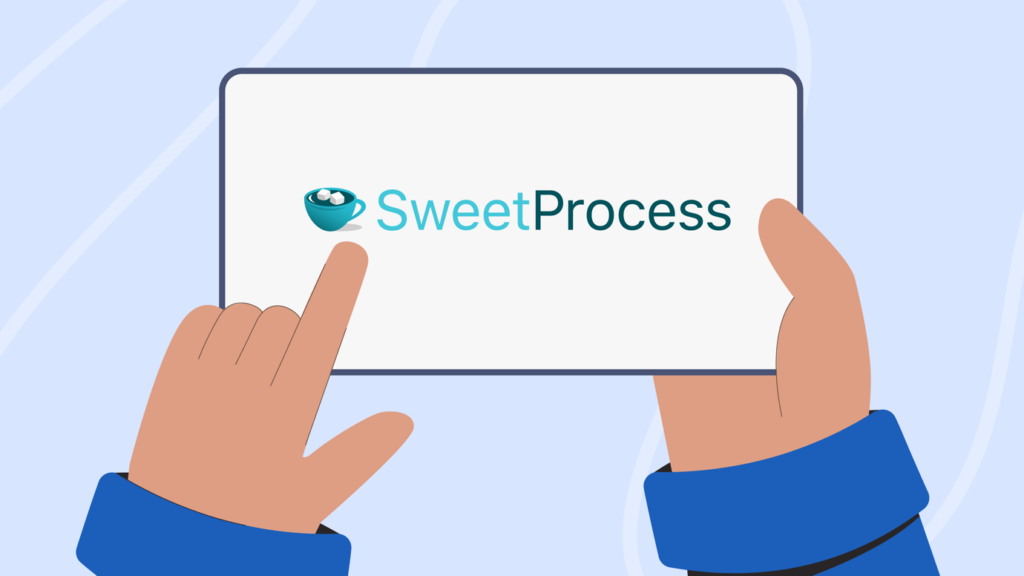
A thriving organizational culture isn’t just a goal—it’s a necessity for modern businesses. From attracting top talent to retaining employees and driving performance, culture plays a pivotal role in every aspect of success.
SweetProcess offers the tools to make your organizational culture not just a concept but a practice embedded in your daily operations. By simplifying documentation, streamlining policies, and fostering collaboration, SweetProcess helps you align your team with your mission and create a workplace where everyone thrives.
Take the first step toward transforming your organizational culture with one click and get a 14-day free trial with SweetProcess, no credit card required.
